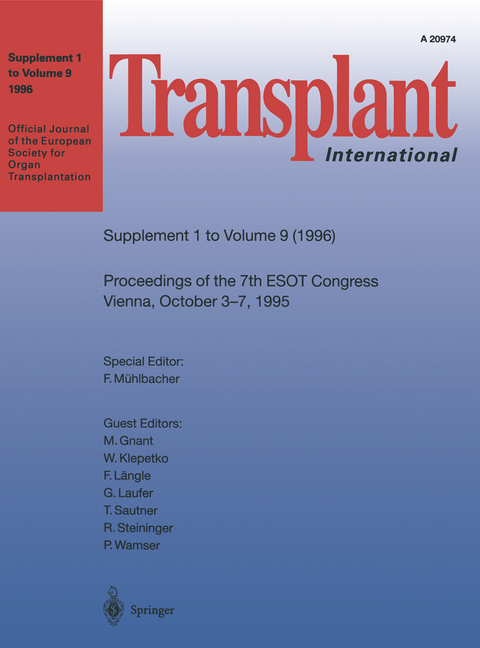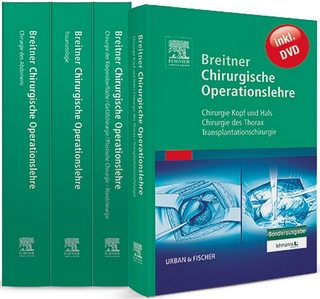
Transplant International
Proceedings of the 7th Congress of the European Society for Organ Transplantation Vienna, October 3–7, 1995
Seiten
1996
|
1. Softcover reprint of the original 1st ed. 1996
Springer Berlin (Verlag)
978-3-540-61024-3 (ISBN)
Springer Berlin (Verlag)
978-3-540-61024-3 (ISBN)
This supplement to TRANSPLANT International contains a most recent update of clinical and experimental research in transplantation and experiences with all modern immunosuppressive drugs, presented at the 7th Congress of the European Society of Organ Transplantation in Vienna in October 1995. The book has relevant information on clinical transplantation of kidneys, livers, hearts and pancreases as well as basic research data of immunbiology and organ preservation. More than 80% of the contributions were generated by respected European research institutions and therefore the book provides a comprehensive overview of European activities in transplantation research.
Kidney.- Liver.- Heart/Lung.- Pancreas.- Small Bowel.- Lung.- Immunosuppression.- Immunobiology.- Xenotransplantation.- Organ Procurement.- Organ Procurement.- Tissue.
| Erscheint lt. Verlag | 28.8.1996 |
|---|---|
| Mitarbeit |
Gast Herausgeber: M. Gnant, W. Klepetko, F. Längle, G. Laufer, T. Sautner, R. Steininger, P. Wamser |
| Zusatzinfo | XV, 497 p. 254 illus. |
| Verlagsort | Berlin |
| Sprache | englisch |
| Maße | 210 x 279 mm |
| Gewicht | 1259 g |
| Themenwelt | Medizinische Fachgebiete ► Chirurgie ► Ästhetische und Plastische Chirurgie |
| Studium ► Querschnittsbereiche ► Infektiologie / Immunologie | |
| Schlagworte | Bone marrow • Diagnosis • Immunosuppression • liver transplantation • Organ • Organ Transplantation • Outcome • Transplantation |
| ISBN-10 | 3-540-61024-3 / 3540610243 |
| ISBN-13 | 978-3-540-61024-3 / 9783540610243 |
| Zustand | Neuware |
| Haben Sie eine Frage zum Produkt? |
Mehr entdecken
aus dem Bereich
aus dem Bereich
Der Klassiker kompakt zusammengefasst: 4 Bände, inklusive 1 DVD
Buch | Hardcover (2014)
Lehmanns Media / Elsevier (Verlag)
199,95 €


